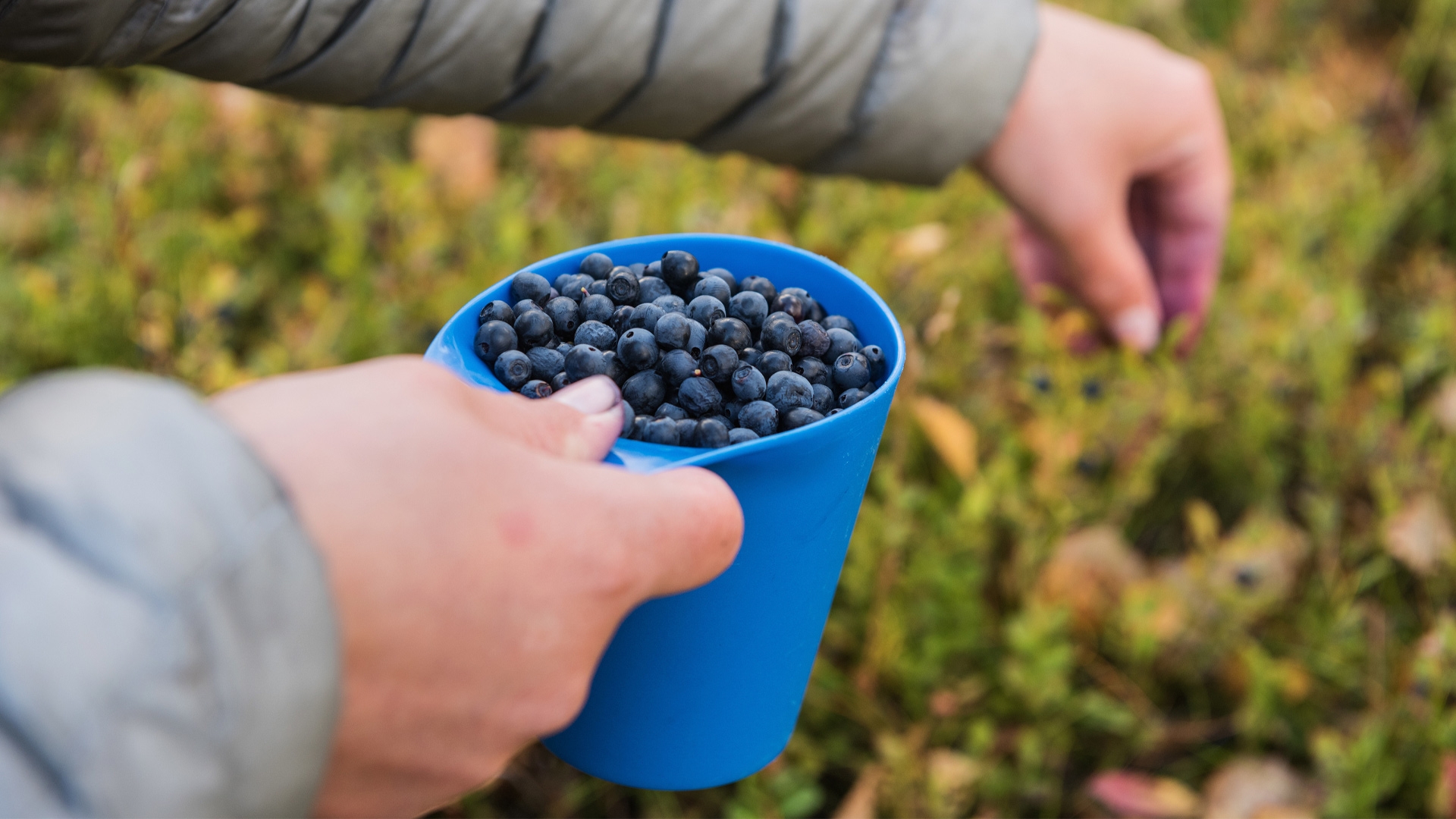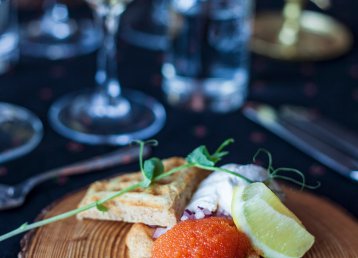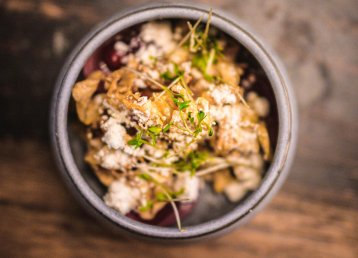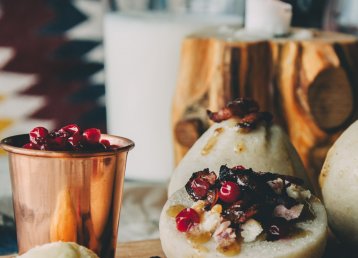Blueberries are one of the most common plants in Sweden. It is a dwarf tree, related to rhododendron and azalea for example, and thrives in spruce forests even if it grows all the way up to the mountain heaths. In Swedish Lapland, we like to use blueberries to make jam or a summer crumble, but the sweet little berries are just as good the way they are, in yoghurt or milk. They are also used to dye yarn and textiles.
Animals eat them straight out of nature’s pantry. Fox, black grouse and ptarmigan love blueberries, and elks happily munch the entire plant. Then there is the classic Swedish children’s song – “Mors lilla Olle” – about a meeting with a bear in the middle of blueberry bushes. Blueberries seem to build a bridge between us humans, and nature. We love them, and so do animals, and we meet in the woods to enjoy the tiny berries that hold such great value to us.
The Arctic lifestyle
When I first moved to Swedish Lapland, I quickly learned that the very tradition of picking berries in summer is a central part of the lifestyle in this part of Sweden. My boyfriend remembers how he and his sister were given their own little baskets to fill with blueberries as they ventured out with their parents. That basket is now kept on a shelf in the basement, as a promise and in the hope of one day being able to pass it on to the next generation.
Talking about our Arctic lifestyle, you have to talk about our berries. A special kind of spark lights up the eyes of every Arctic resident as they reminisce over the berry-picking days of their childhood. To most people, summer and autumn are not complete unless they involve filling the freezer with berries, and the pantry with jam.
It definitely holds a kind of magic being able to hike through bushes and moss – wearing slightly oversized wellies – on a clear, sunny day while collecting the treasures of the forest. The ensuing conversion of tiny sweets to jam, juice, marmalade, pie or compote is an important part of our food culture. Making jam and juice is something we have done for as long as we can remember, and even if our earliest ancestors may not have made blueberry jam, they definitely enjoyed the tiny health bombs back in those days too.
Natural medicine
The fact is that blueberries are one of the healthiest foods there is. When the well-regarded Mayo Clinic in the US, listed the world’s ten healthiest foods, blueberries had a given place on the list. Blueberries used to be sold in pharmacies in Sweden, as a cure for fever and an upset stomach.
Blueberries also help brain cells communicate, which means they are good for your memory and concentration. A group of researchers in the UK studied volunteers who had blueberry smoothies for breakfast and then compared their memory and ability to concentrate against a control group who did not drink the smoothie. The results showed that the performance of the control group who had not had blueberries was slightly better compared to those who had not enjoyed a blueberry smoothie 5 hours prior. Like a natural energy drink!
5 health benefits of blueberries
1. Contribute to better vision
2. Prevent cardiovascular disease
3. Improve memory
4. Help concentration
5. Traditionally used to ease fever and upset stomachs
Longer life
Perhaps blueberries also help us live longer. Can you imagine life without Alzheimer’s, Parkinson’s and diabetes? Blueberries are rich in flavonoids, said to protect against these diseases. They also help slow down the ageing process of the eye and help us see the world through healthy eyes for a lifetime.
As if that were not enough, blueberries can also help our hearts beat as they should and extend our life span in that sense. A Swedish pilot study at Örebro University has shown measurable differences between myocardial infarction patients who had blueberry powder compared to a control group who did not receive it. The effects on 50 patients were measured for eight weeks. Half were given freeze-dried blueberry powder three times a day and the other half had a placebo. Those who had the blueberry powder presented with lower levels of oxidised LDL cholesterol in their blood, cholesterol that indicates inflammation in vessels. Blueberries could become part of preventing and treating cardiovascular disease in the future.
Blueberry crumble with vanilla sauce
But it is not heart attacks, diabetes or Alzheimer’s I have in mind as my rubber boots sink into the moss where the sweet little blues are waiting to be picked. Rather, my thoughts go to the fresh blueberry crumble with vanilla sauce that I will enjoy later today, or the home-made jam sweetening my morning porridge tomorrow.
Jackpot is finding a sunny slope where they blueberries have grown really big and sweet. Then they almost look like American blueberries, considerably larger than our Swedish ones and with a white, solid interior as opposed to our berries that are purple and juicy. If you ask an American, by the way, our berries are not called blueberries at all, but rather bilberries. Bilberry is actually the correct English term for the European blueberry. But to me, our berries are the real blueberries, of course.
Next time my boyfriend and I go picking the little wild blues, I will spare a thought to our ancestors doing the same before us, grateful to all those who shaped our Arctic food culture and made blueberries such a prominent part of it. Perhaps we will do this in the company of a third person one day, carrying their very own, inherited berry-picking basket.
Easy blueberry crumble
About 5 dl blueberries
200 g butter
4 tablespoons sugar
3 dl wheat flour
3 dl oat flakes
1.5 teaspoons vanilla sugar (optional)
Fill the bottom of a large pie mould with blueberries. Melt the butter and mix in sugar, flour, oat flakes and vanilla sugar, if used. Spread the dough over the berries and bake at 225° C until golden brown. Serve with vanilla ice-cream or vanilla sauce, and some fresh berries on top as decoration.



























